THE REDBIRD REVIEW
John Mozeliak’s first trading deadline as St. Louis baseball boss was back in 2008. Where did the time go? Not counting the pandemic-shortened season of 2020, this will be the Mo’s 16th trade-deadline venture during his term in the head office.
Mozeliak has had some great-good deadlines.
Some transformative deadlines.
Some so-what deadlines.
Inactive deadlines.
Bad deadlines.
We don’t know what to expect before the 2024 MLB trading deadline expires six days from now, on Tuesday afternoon. But I’d be surprised (and disappointed) if the Cardinals fail to secure meaningful help. Their current roster is capable of putting the Redbirds in contention, but may not have the horses to reach the postseason and win a playoff series for the first time since 2019.
The search presumably will cover multiple areas: a right-handed reliever to handle big spots during the late innings. A right-handed hitter that can help prevent the Cardinals from looking like mindless, overwhelmed hacks against mediocre lefty starters like Martin Perez. And, of course, starting-pitching depth. A change in schedule because of a rainout in Atlanta left the Cardinals scrambling to start a rusty reliever, Matthew Liberatore, in Wednesday’s 5-0 loss at Pittsburgh.
Mozeliak has come through for the Cardinals in the past. And they need him to do it again. In a generous spirit of positivity, here’s my list of Mozeliak’s finest wheeling-and-dealing moves at the deadline.
1. Dumping center fielder Colby Rasmus to reorder a problematic pitching staff. Acquiring the effective shortstop Rafael Furcal. Saving the 2011 season.
Manager Tony La Russa wanted the unmotivated Rasmus out of the clubhouse. Mozeliak agreed, but also wanted Rasmus gone for other reasons. Mozeliak got into action with a creative three-way deal involving the Blue Jays and White Sox. He exported Rasmus, the headliner, to Toronto. In the return from the White Sox and Blue Jays, the Cardinals acquired starting pitcher Edwin Jackson, relievers Octavio Dotel and Marc Rzepczynksi, and backup outfielder Corey Patterson. As an added bonus, the deal also expunged Colby’s meddling father, Tony Rasmus.
The Outcome: La Russa made Jon Jay the starter in center field, and had the relief assets to create more advantageous matchups in high-leverage situations. Pitching coach Dave Duncan made a difference with Jackson, who had a 3.58 ERA in 12 starts and beat the Phillies in an NLDS start. A couple of days after the Rasmus trade, Mozeliak landed Furcal from the Dodgers for a marginal outfield prospect. Furcal upgraded the shortstop defense and posted an above-average OPS+ after joining the Cardinals. The Cardinals do not win the 2011 World Series without both of these trades. After Mo’s moves, the Cardinals pitched to a 3.39 ERA, went 32-19 over the final 51 regular-season games, and grabbed the NL’s wild-card spot on the final day … then took down the Phillies, Brewers and Rangers during an incredible postseason run.
2. Welcome to St. Louis, Matt Holiday. You’ll love it here and do great things.
At the 2009 deadline, Mozeliak made a heist in a deal with Oakland, acquiring the future franchise Hall of Famer Holiday for three decent but inconsequential prospects: first baseman Brett Wallace, outfielder Shane Peterson and pitcher Clayton Mortensen.
The Outcome: Holliday put an extra charge in the St. Louis offense over the final two-plus months of the regular season and the Cardinals won the NL Central. Before the 2010 campaign, Holliday signed a seven-year, $120 million deal to remain in STL and had a wonderful career here. He was a big part of five postseason teams including the 2011 World Series champions, the 2013 NL pennant winner, and the 100-win team of 2015. As a Cardinal, Holly was a four-time All-Star, received MVP votes in four seasons. With Holiday’s robust offense and highly respected leadership, the Cardinals led the majors in postseason wins from 2011 through 2015. To this day, Holliday stands out as one of the great Cardinals of the Bill DeWitt Jr. ownership era that began in 1996. As a Cardinal,, Holliday homered 156 times, ripped 401 extra-base hits, drove in 616 runs and put up a slash line of .293/.380/.494.
3. A stunning trade to wake up the team by adding hellfire starting pitcher John Lackey and his biting, outspoken and effective abrasive personality.
The Outcome: This maneuver was one of Mozeliak’s very best – and brashest – deadline plots. At a time when all seemed quiet — with the deadline about to expire — Mozeliak shocked Cardinal fans by acquiring Lackey from Boston for young pitcher Joe Kelly and (sadly) broken-down hitter Allen Craig. Lackey’s salary was incredibly affordable, and he was under contract through 2015. As a Cardinal, Lackey had a 3.10 ERA and handled a huge load of innings in 43 starts. He won two postseason games. He walked into a cozy, happy-go-lucky clubhouse and made it a little uncomfortable, which is exactly what a complacent 2014 team needed. The Cardinals were a sleepy team before the trade; after Lackey arrived they had a .607 winning percentage the rest of the way in ‘14. Lackey was a porcupine. A relentless competitor.
Footnote: I remember getting a text message from a Cardinals pitcher who resented my generous praise of Lackey late in 2014. “You don’t understand,” the pitcher told me. “He’s a jerk. He isn’t very popular. He speaks his mind and guys don’t like him pushing all the time. He’s too edgy.” My response, and pardon my caps: DUH. THAT’S EXACTLY WHY MOZELIAK GOT HIM.
4. Two for 2022: transforming the rotation by acquiring starters Jordan Montgomery and Jose Quintana.
Media and fans hounded Mozeliak to go get a starting pitcher. Well, he did something more awesome than that. He negotiated on two fronts and got two starters. Montgomery and Quintana. Mozeliak sent center fielder Harrison Bader to the Yankees for Monty. He moved corner-infield prospect Malcolm Nunez and starting-pitching prospect Johan Oviedo to the Pirates for Quintana and the durable reliever Chris Stratton.
The Outcome: The two new left-handed starters combined for 23 regular-season starts during the remainder of the ‘22 season, collectively pitching to a 2.56 ERA. And Stratton added important depth to the bullpen. After the two transactions the Cardinals surged to a .650 winning percentage and finished with 93 wins and the NL Central title.
5. 2021: a last-minute maneuver to bring in two low-key but essential starting pitchers in lefthanders J.A. Happ and Jon Lester.
The Cardinals’ 2021 rotation was a big pile of broken parts and junk. Mozeliak had to do something to make his rotation respectable and viable, and he succeeded by bringing in Lester from Washington and Happ from Minnesota. This wasn’t well received by media or fans. Outfielder Lane Thomas was the price for Lester, but the Cardinals didn’t need LT at the time, and he was dealing with injuries. The move was logical. Pitcher John Gant – who couldn’t throw strikes – went to the Twin Cities in exchange for Happ. It worked out just fine.
The Outcome: Applause. The Cardinals were plodding along at 52-52 before the two trades but went 38-20 over the final two months to claim the wild-card spot. The Cardinals were 14-9 in starts made by Lester and Happ, and STL had the seventh-best rotation ERA (3.73) over the final two months. The veteran presence of Happ and Lester had a calming influence in a season of chaos. When folks review Mozeliak’s impressive deadline maneuvers, the Lester-Happ additions are often overlooked. I have no idea why. Their impact was obvious.
6. The Cardinals traded for Edward Who? OMG, what the heck did Mo do, going on a dumpster dive for a no-name reliever?
The 2012 Cardinals were in desperate need of bullpen aid, so Mozeliak gave up a failed former first-round draft choice – third baseman Zack Cox – to the Marlins for right-handed reliever Edward Mujica. Cardinals fans were incensed when old friend Walt Jocketty acquired a big-name reliever, Jonathan Broxton, for the Reds on the same day. Who the hell was this Mujica dude? He’s a nobody. Not exactly. The Cardinals had done their scouting and made a shrewd deal.
The Outcome: Mozeliak knew what he was doing. Mujica came over and had a superb 1.03 ERA in 29 relief appearances for the 2012 Cardinals. He was a crucial addition to a team that kicked in late to win a wild-card spot. The Cards advanced to the 2012 NLCS and stalled. In 2013, Mujica had 37 saves and was chosen for the NL All-Star team. And even though he faded later in the season after being overworked, Mujica was a valuable piece for the 2013 NL champions. In his two postseasons with the Cardinals, Mujica was summoned into 11 games and crafted a 2.79 ERA. This was one of Mozeliak’s most underrated moves.
7. 2010: Mozeliak angers the church lady by trading outfielder Ryan Ludwick for right-handed starting pitcher Jake Westbrook.
Ludwick was a popular Cardinal who had a booming 2008, blasting 37 homers and driving in 113 runs and deservedly earning a place on the NL All-Star roster. Ludwick’s production declined in 2009, but improved in 2010, and that sparked interest from potential trade partners. So Mozeliak flipped Luddy to San Diego in a three-way transaction that brought Westbrook to St. Louis from Cleveland. For their part the Padres traded pitcher Corey Kluber to Cleveland, but the righty wasn’t a hot-commodity prospect at the time. And the Cardinals’ situation required immediate assistance for the rotation; this wasn’t a deal devised to take a flier on a Class A prospect.
The day after making the trade, Mozeliak was stopped on his way out of a Sunday church service by an elderly woman who berated him for trading Ludwick. Mozeliak had his reasons; he needed pitching and wanted to create playing time in the outfield for two emerging young Redbirds, Allen Craig and Jon Jay. The hitters were cost controlled and ready to take on prominent roles and it made sense to open the space by moving Ludwick.
The Outcome: Better than you may remember. I wasn’t crazy about the trade at the time, but I kept an open mind and came around to understanding how the move benefited the Cardinals. St. Louis had strong offenses but needed back-rotation starters and some runway for Jay and Craig. Westbrook was a nice fit. Good pitcher, great teammate. All three guys — Westbrook, Jay and Craig — made the Cardinals better for 2011, and we all know how that season ended.
This was another example of Mozeliak making a solid, quality move that wasn’t embraced at the time. Westbrook gave the Cardinals 75 above-average innings after joining the Cards in 2010, won 12 games in 2011, and had 13 wins in 2012 before injuries set him back in 2013. He was part of the rotation that won the 2011 World Series, reached the 2012 NLCS, and captured the NL pennant in 2013.
Westbrook supplied a healthy amount of innings for the Cardinals and was just what the team needed in a fourth or fifth starter. A fun fact that’s been forgotten: pitching in relief in extra innings, Westbrook was officially the winning pitcher in the classic 10-9 victory over Texas in 2011 World Series Game 6. In that memorable drama, Jay went 2 for 4 and scored a run, and Craig hit a solo homer in the eighth to cut the Texas lead to 7-5. In Game 7, Craig broke a 2-2 tie with a fourth-inning HR that put the Cardinals ahead to stay. It was Craig’s fourth HR of the 2011 postseason, he paid off in a big way when Holliday suffered an injury that took him out of the World Series. With all due respect to Ludwick, by that time I don’t think a single Cardinal fan had a curse word for the 2010 trade. I assume the church lady was happy with the second World Series parade in six years.
Good luck to Mozeliak and associates as they try to find the talent – and a match – by the trading deadline. This is a crucial time, and test, in STL’s bounce-back season.
Thanks for reading …
–Bernie
A 2023 inductee into the Missouri Sports Hall of Fame, Bernie has provided informed opinions and perspective on St. Louis sports through his columns, radio shows and podcasts since 1985.
Please follow Bernie on X @b_miklasz and Threads @miklaszb
For weekly Cards talk, listen to the “Seeing Red” podcast with Will Leitch and Miklasz. It’s available on Apple, Spotify, or where you get your podcasts. Follow @seeingredpod on X for a direct link.
Stats used in my baseball columns are sourced from FanGraphs, Baseball Reference, StatHead, Baseball Savant, Baseball Prospectus, Brooks Baseball Net, and Sports Info Solutions and Cots Contracts unless otherwise noted.
For the last 36 years Bernie Miklasz has entertained, enlightened, and connected with generations of St. Louis sports fans.
While best known for his voice as the lead sports columnist at the Post-Dispatch for 26 years, Bernie has also written for The Athletic, Dallas Morning News and Baltimore News American. A 2023 inductee into the Missouri Sports Hall of Fame, Bernie has hosted radio shows in St. Louis, Dallas, Baltimore and Washington D.C.
Bernie, his wife Kirsten and their cats reside in the Skinker-DeBaliviere neighborhood of St. Louis.



